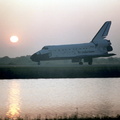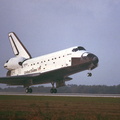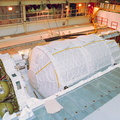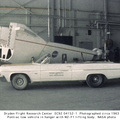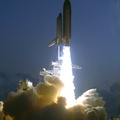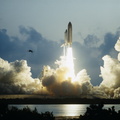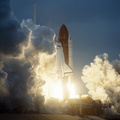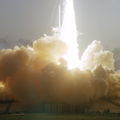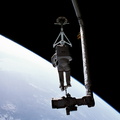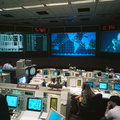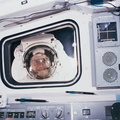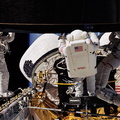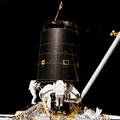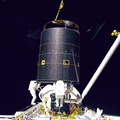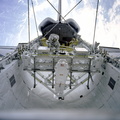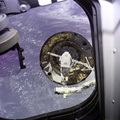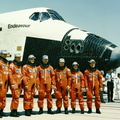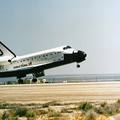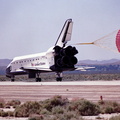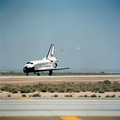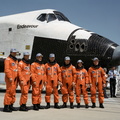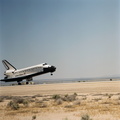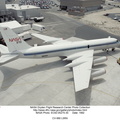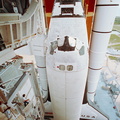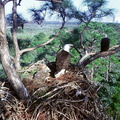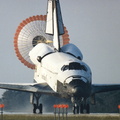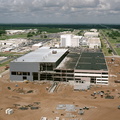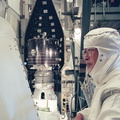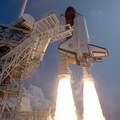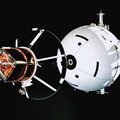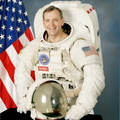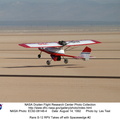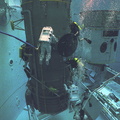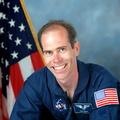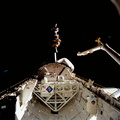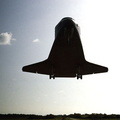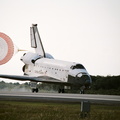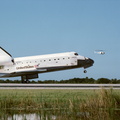
WIKIARCHIVES.SPACE
The Human Spaceflight Archive

Ed Schneider, (left), was the project pilot for the F-18 High Angle of Attack program at NASA's Dryden Flight Research Center, Edwards, California. He had been a NASA research pilot at Dryden since 1983. In addition to his assignment with the F-18 High Angle of Attack program, Schneider was a project pilot for the F-15B aeronautical research aircraft, the NASA NB-52B launch aircraft, and the SR-71 "Blackbird" aircraft. He is a Fellow and was the 1994 President of the Society of Experimental Test Pilots. In 1996 he was awarded the NASA Exceptional Service Medal.
Information
- Taken in
- Edwards Air Force Base
- Author
- NASA
- Description
-
Ed Schneider, (left), was the project pilot for the F-18 High Angle of Attack program at NASA's Dryden Flight Research Center, Edwards, California. He had been a NASA research pilot at Dryden since 1983. In addition to his assignment with the F-18 High Angle of Attack program, Schneider was a project pilot for the F-15B aeronautical research aircraft, the NASA NB-52B launch aircraft, and the SR-71 "Blackbird" aircraft. He is a Fellow and was the 1994 President of the Society of Experimental Test Pilots. In 1996 he was awarded the NASA Exceptional Service Medal.
Schneider is seen here with Fitzhugh L. Fulton Jr., (right), who was a civilian research pilot at Dryden. from August 1, 1966, until July 3, 1986, following 23 years of service as a pilot in the U.S. Air Force. Fulton was the project pilot on all early tests of the 747 Shuttle Carrier Aircraft (SCA) used to air launch the Space Shuttle prototype Enterprise in the Approach and Landing Tests (ALT) at Dryden in l977. For his work in the ALT program, Fulton received NASA's Exceptional Service Medal. He also received the Exceptional Service Medal again in 1983 for flying the 747 SCA during the European tour of the Space Shuttle Enterprise. During his career at Dryden, Fulton was project pilot on NASA's NB-52B launch aircraft used to air launch a variety of piloted and unpiloted research aircraft, including the X-15s and lifting bodies. He flew the XB-70 prototype supersonic bomber on both NASA-USAF tests and NASA research flights during the late 1960s, attaining speeds exceeding Mach 3. He was also a project pilot on the YF-12A and YF-12C research program from April 14, 1969, until September 25, 1978.
The F/A-18 Hornet seen behind them is used primarily as a safety chase and support aircraft at NASA's Dryden Flight Research Center, Edwards, Calif. As support aircraft, the F-18's are used for safety chase, pilot proficiency and aerial photography. As a safety chase aircraft, F-18's, flown by research pilots, accompany research missions as another “set of eyes” to visually observe the research event, experiment or test to help make sure the flights are carried out safely. The “chase” pilots are in constant communication with the research pilots and mission control to report abnormalities that may be seen from the support aircraft.
Pilots must also stay proficient by flying a certain number of missions per month. F-18's are used for this. A two-seat support aircraft is also used when research missions require an engineer or photographer on the flights.
- Created on
- Wednesday 8 January 1992
- Albums
- US SPACE PROGRAM / AERONAUTICS RESEARCH / F-18 HORNET / Chase Aircraft
- Source link
- https://www.dfrc.nasa.gov/Gallery/Photo/F-18Chase/index.html
- Visits
- 14
- Rating score
- no rate
- Rate this photo
- License
- Public Domain
- Modified by WikiArchives
- No (original)
- Downloads
- 0
Powered by Piwigo























